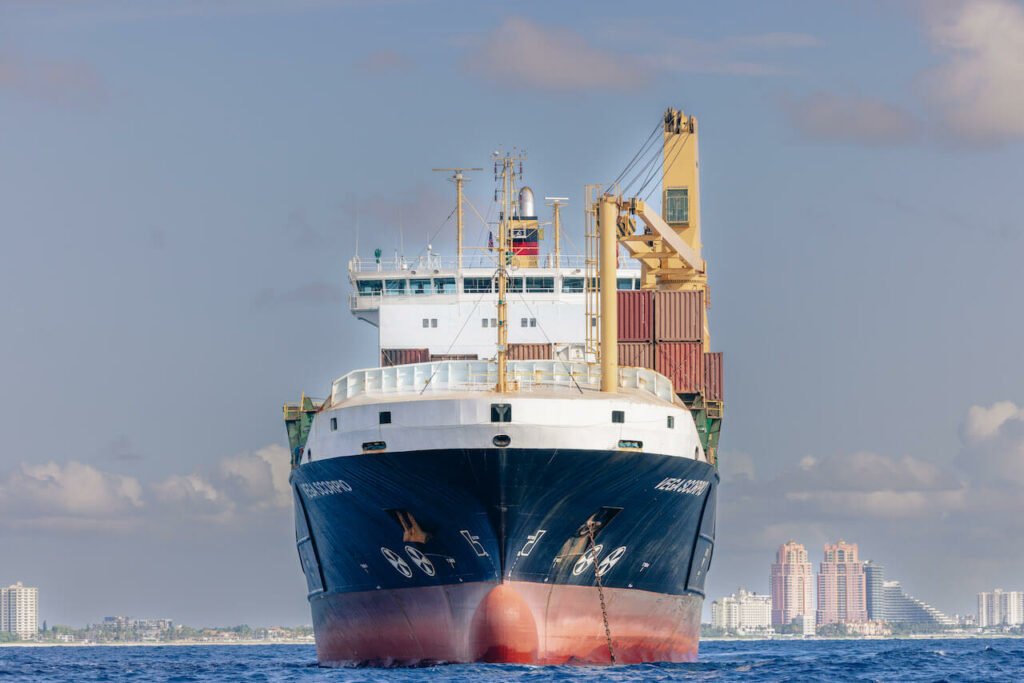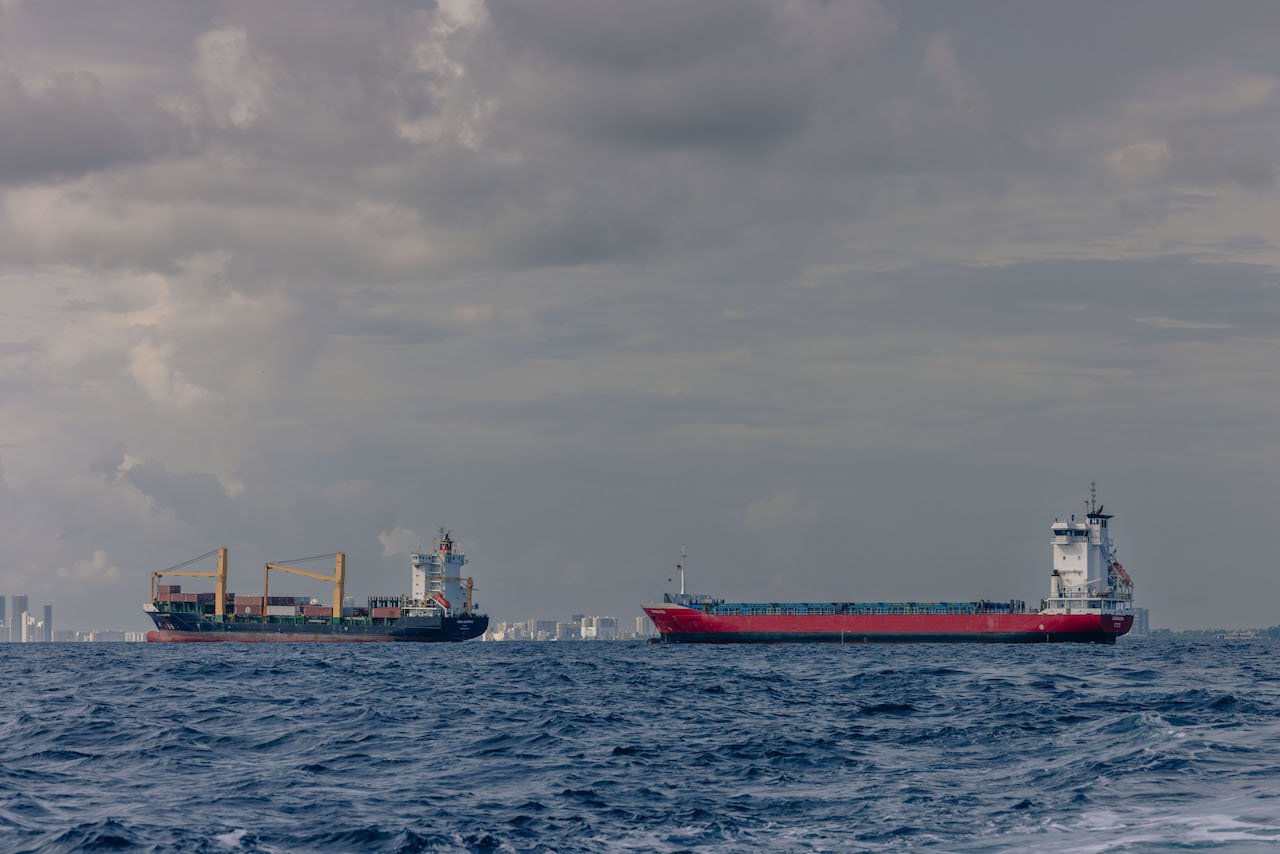
Reduce Fuel Consumption
Reduce Greenhouse Gas Emissions
Achieve Energy Efficiency Design Index
AIR LUBRICATION SYSTEMS
REDUCE SHIP FUEL CONSUMPTION
Why ShipGlide?
Many Energy Saving Devices (ESDs) aim to reduce drag and fuel consumption, including hull coatings, optimized hull design, propulsors and propeller boss cap fins. Our air lubrication systems offer substantial energy savings, while other ESDs often achieve less than our benchmarks. ShipGlide’s air lubrication systems create a layer of air below the hull. The air lubrication allows for ships to operate with less drag. Reduced drag results in reduced pollution and reduced fuel consumption. Our designs are tailor-made and optimized for your specific vessels using the results of physical measurements in our BLT Lab with world-class, cutting-edge computational fluid dynamic (CFD) software. Our design process allows ShipGlide and the client to see the power savings and verify ALS design before installation occurs.
NOTABLE
CO2 Reduction
REDUCE SHIP FUEL CONSUMPTION
ShipGlide Air Lubrication Systems
ShipGlide Air Lubrication System generates real-world, in-service, operational fuel reductions. Our hull air lubrication systems are calibrated, optimized, and verified in our proprietary, full-scale test lab before deployment to your vessel. We address the many complexities and challenges involved in the design of these systems and the physical phenomena of optimizing resistance reduction provided by an air lubrication system.
Ocean shipping has a large global footprint, with 53,000 ships in the fleet annually consuming more than 300 million tons of fuel. As a result, shipping accounts for 3.5% of global carbon emissions. A ship’s fuel consumption depends on many factors such as wake, frictional drag and pressure drag. 60 to 90% of total drag comes from friction, making it a major factor affecting fuel consumption.
REDUCE GAS EMISSION
Integration of Existing Green Technologies
Many Energy-Saving Devices (ESDs) aim to reduce drag and fuel consumption, including hull coatings, optimized hull design, propulsors, and propeller boss cap fins. Our air lubrication systems offer substantial energy savings, while other ESDs often achieve less than our benchmarks. ShipGlide’s air lubrication systems create a layer of air below the hull. The air lubrication allows for ships to operate with less drag. Reduced drag results in reduced pollution and reduced fuel consumption.
Our designs are tailor-made and optimized for your specific vessels using the results of physical measurements in our testing lab with world-class, cutting-edge Computational Fluid Dynamic (CFD) software. Our design process allows ShipGlide and the client to see the power savings and verify ALS design before installation occurs.
MAJOR
FUEL REDUCTION

Reduce Greenhouse Gas Emissions
Through detailed CFD analysis, we optimize the ALS system for each hull form, providing optimum fuel oil savings and greenhouse gas reductions
IMPROVE ENERGY EFFICIENCY
MEET EEXI and EEDI Standards
Our ALS technology helps you comply with IMO’s Energy Efficiency Design Index (EEDI).
In the drive toward a greener maritime industry, the role of Air Lubrication Systems (ALS) cannot be overstated. Mandates requiring new ships to slash CO2 emissions by at least 20-30% by 2030 have elevated the importance of innovative technologies like ALS, recognized as an “Innovative Energy Efficiency Technology” by the IMO.
Central to this movement are key initiatives such as the Energy Efficiency Existing Ship Index (EEXI), Energy Efficiency Design Index (EEDI), and Carbon Intensity (CII) reduction. These measures form the bedrock of maritime sustainability, requiring vessels to navigate with minimal environmental impact. The Energy Efficiency Design Index (EEDI) and the Ship Energy Efficiency Management Plan (SEEMP) drive global energy efficiency improvements, making them the first mandatory greenhouse gas reduction regime for an entire industry.
A key technology to help achieve EEDI compliance is air lubrication, such as ShipGlide’s ALS. This system creates a new boundary layer under the vessels, drastically reducing frictional resistance, fuel consumption, and emissions.
20-30%
Reduction of Emissions by 2030
IMPROVE ENERGY EFFICIENCY
Reduce Carbon Intensity (CII)
ShipGlide’s ALS offers strategic advantages in reducing Carbon Intensity (CII) and achieving EEXI and EEDI compliance. The system is adaptable to diverse hull forms and provides shipowners with a preliminary Computational Fluid Dynamics (CFD) analysis, offering detailed insights into the system’s impact on energy efficiency and emissions reduction.
By minimizing resistance, the ShipGlide system decreases drag, requiring less energy for propulsion. This substantial drop in fuel consumption directly correlates with lower carbon emissions, aiding vessels in meeting EEXI and EEDI standards. By enhancing energy efficiency, ShipGlide plays a pivotal role in propelling the maritime industry toward a sustainable and environmentally responsible future.
THE COMPLETE PICTURE
We Supply World-Class Air Lubrication Solutions (ALS) to Vessels of All Types and Sizes
Computational Fluid Dynamics
ShipGlide conducts CFD analysis for every ship type using cutting-edge CFD software and in-house CFD experts.
Big Data
ShipGlide analyzes ship data to confirm fuel savings achieved through its air lubrication systems.
Boundary Layer Testing Laboratory
ShipGlide has devoted capital and resources to design and build a testing lab dedicated to optimizing performance for our clients.
ALS IP and Patents
Many of our new cutting-edge concepts have been thoroughly tested, validated, and are now under multiple patents.
Installation
Our engineers and project managers have the ability to take a ShipGlide ALS from early concept design to completed installation..
ALS optimization
We have conducted test cases to demonstrate the potential for analyzing the resistance reduction effects of the ShipGlide ALS.
AIR LUBRICATION SYSTEM COMMON QUESTIONS
Popular questions
-
Our air lubrication systems are designed for longevity and minimal maintenance over the service life of a vessel.
The air compressors and distribution piping that make up an ALS use rugged, marine-grade components rated for continuous operation in harsh ocean environments. All parts are easily accessible for routine inspection and maintenance. With basic upkeep, the hardware can function reliably for the full lifespan of a ship. The air nozzles will experience minimal corrosion and fouling due to the constant airflow.
The technology is designed to be highly robust and resilient. Once integrated into a ship, it can provide fuel efficiency benefits over the full service life without requiring major overhauls or replacements of system components. With routine maintenance, an ALS investment will continue generating returns for decades.
-
Air lubrication is a proven technology that can reduce friction between a ship's hull and the water. When optimized, air lubrication can decrease fuel consumption through delivering noteworthy efficiency improvements and cost savings.
This clever approach reduces drag by minimizing the portion of the hull in direct contact with water. With proper injector systems and hull designs, the technology can distribute air evenly for a stable hydrodynamic lift.
Research continues to fully harness the potential of air lubrication. Engineers are refining air injection methods and hull configurations to maximize performance. Adoption has been gradual but is expected to increase overtime, as the data from current installations accumulates.
Air lubrication provides a proven method to meaningfully improve ship efficiency. With ongoing development, these systems are seeing widespread implementation and are making a significant impact on global maritime transport. The technology has demonstrated genuine promise to reduce emissions and costs for the shipping industry.
-
Yes, our air lubrication systems can be disabled if needed, since the technology is fully integrated into a ship's controls. However, there are no operational scenarios where turning off an ALS would provide benefits.
Unlike protruding systems from some competitors that create drag when not in use, our air nozzles are flush with the hull. When the ALS is powered down, the nozzles pose no additional resistance. There is no efficiency loss from disabling our system.
Turning off the ALS would eliminate its drag reduction benefits. Our system is designed for continuous operation in all conditions. There are no associated performance penalties or safety risks that would necessitate disabling the ALS. Our system imposes no penalties when active and delivers maximal benefits through continuous optimized operation.
-
Several factors make air lubrication systems more effective on larger, faster ships with hull roughness.
Larger hull surface area provides more space for a consistent, unbroken air layer to form. Large ships have greater weight and engine power, so reducing their higher friction yields more significant fuel savings. Hull roughness improves performance by acting as a site for the air layer to form and spread evenly across the hull. A perfectly smooth surface can cause air bubbles to slip unstably. Controlled roughness helps the air layer adhere and remain stable. Higher ship speeds increase overall friction and drag. Reducing this elevated friction via air lubrication yields comparatively higher fuel savings at faster speeds.
Combining these factors allows our air lubrication systems to deliver their greatest fuel-saving performance, compared to smaller ships, going slower speeds with a smooth hull.
-
Air lubrication technology has been trialed on approximately 80 ships across segments such as cruise, dry bulk, containerships, tankers and ferries. The extensive testing has allowed researchers to evaluate and refine air lubrication systems for real-world applications.
As the technology continues to be implemented, findings from these prototype deployments will help guide the wider adoption of air lubrication and enable further optimization of these innovative systems.
-
Calculating fuel savings is based on sea trials with the system on and off and by recording performance data for three months before and after installation.
CFD analysis is first done on the bare hull to determine baseline performance. Air lubrication nozzles are then added to the digital model at different locations and simulations run at various speeds. This CFD analysis optimizes nozzle placement for maximum efficiency.
Controlled sea trials are conducted to compare efficiency with and without the air lubrication system active. The torque sensor provides real-time power data, while factors like speed, loading, and sea state are monitored and accounted for.
By combining the computational simulations and physical trials, the fuel savings from air lubrication can be accurately calculated. The CFD analysis dial in optimal nozzle configurations, while the torque sensor measurements quantify real-world reductions in engine load and fuel.






